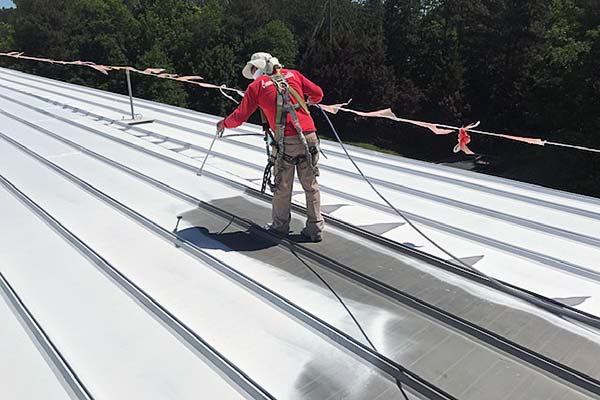Roof coatings are a relatively new innovation in roofing, and they have a lot of benefits to offer. This article will explain what roof coatings are, how they work, and the benefits they provide. We’ll also look at some of the different types of roof coatings available on the market today.
To learn more about the different types of roof coatings available, you may browse alphabuilders.

Image Source: Google
The type of roof coating used will depend on the type of roof and the climate.
1- Reduced noise and air pollution from weathering and traffic on the roof.
2- Protection against solar heat gain during the summer months.
3- Longer life for the roof membrane due to less oxidation and degradation.
How Roof Coatings Work?
Roof coatings are a type of protective finish that can be applied to a roof to prevent water, ice, and snow from sinking into the shingles and causing them to rot. The three most common types of roof coatings are oil-based, silicone-based, and acrylic.
Oil-based roof coatings are the most popular because they are durable and resist fading. They also have a low odor and do not require special disposal procedures. Silicone-based roof coatings are less durable than oil-based coatings but are more resistant to rain and snow buildup. Acrylic roof coatings are the least durable but are the most weatherproof.
The Benefits of Using a Roof Coatings
1. Improved Weather Protection
A roof coating can help improve weather protection on your home by creating an energy-dense barrier on the roof that repeals water and wind energy. This can help reduce the amount of damage that occurs in severe weather events like hurricanes or tornadoes.
2. Reduced Maintenance Costs
A roof coating also helps reduce maintenance costs by protecting your roof from the elements and ensuring that it lasts longer.